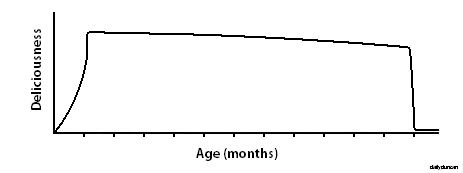Many North Americans enjoy the taste of lamb. Maybe it tastes so good because lambs are innocent and pure – they haven’t tasted the harsh cruelties of life – or perhaps because the meat hasn’t been sitting out in a field. Whatever the case, we can’t get enough roasted lamb, rack of lamb, lamb chops, lamb shanks or lamb tacos.
Everyone knows that lamb is an acceptable choice of meat that can be found at any supermarket, but why don’t we see mutton along side it? We eat both veal and beef, but in the world of sheep only the young are fit to be devoured, as if the meat becomes garbage once the lamb has a birthday.
A lamb becomes a sheep after one year and its meat can no longer be sold as lamb, instead going by the name hogget; after two years the meat is known as mutton. Obviously the quality of the meat does not immediately disintegrate once the name changes, so there must be another reason for the rejection of this legitimate food source. The answer is found in the question, “Why don’t people eat mutton?” Would you want to eat something called mutton? The word begins with derogatory slang for a dog and makes us think of dark, stringy flesh that smacks of mud and ash. Even hogget, which is not as familiar a term, would cause the curious to cringe after simply reading the label. So what’s the solution?
From now on the meat of any sheep past the age of twelve months shall be known as aged lamb. People like aged things, like wine and cheese, so they will be innately attracted to the idea of aged lamb. It offers the perception of a more robust, chiseled flavor, catering to those of us who prefer more refined cuisine. Now in addition to wearing their hair on our bodies and using their guts for tennis rackets, we can now fill our stomachs with our puffy, bleating friends.
Stop letting sheep off the meat hook and eat aged lamb.
